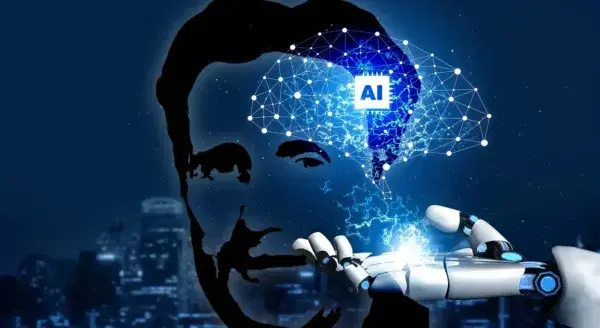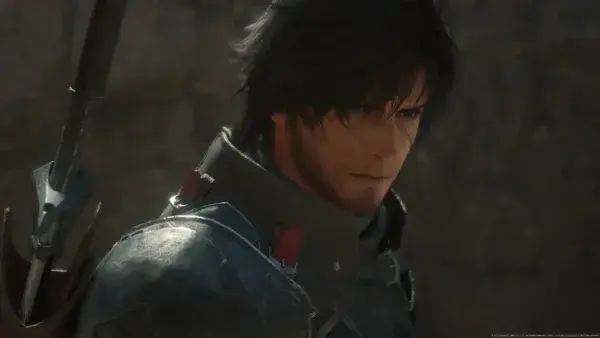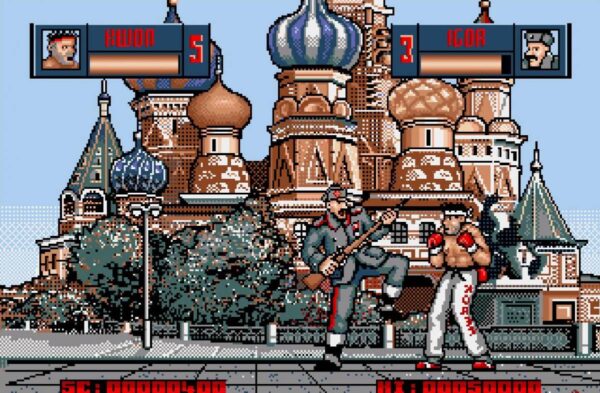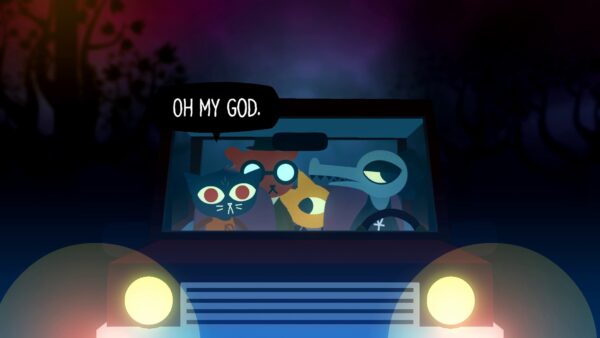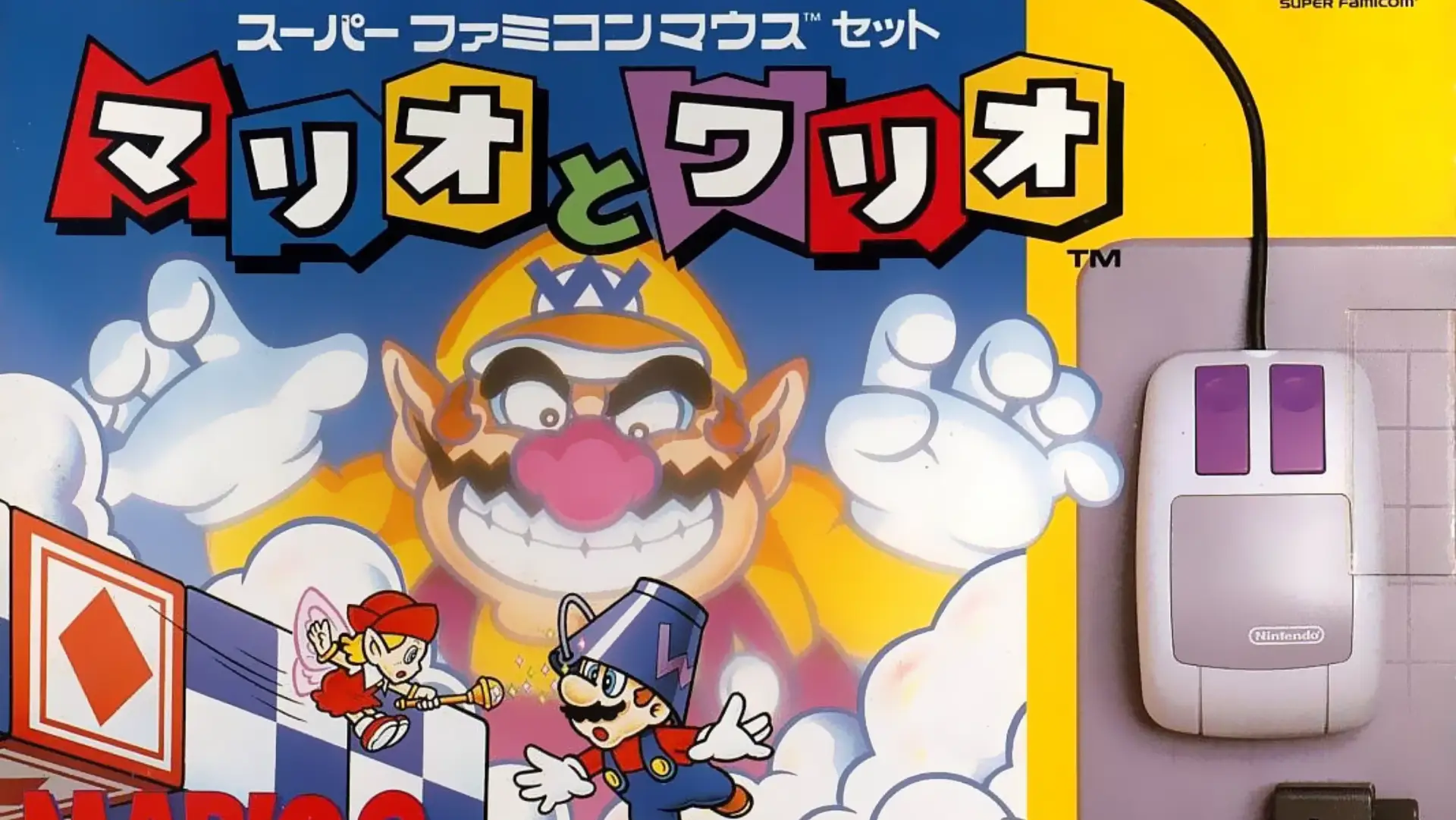
On the eve of Super Mario Wonder’s release, here’s a second helping of six incredibly obscure games starring the Italian plumber. Have you played any of these?
After months of anticipation, it’s nearly here: Super Mario Wonder is officially out on 20 October. And to celebrate, we’ve been looking back at some of the hatted hero’s more obscure outings.
Our previous entry covered Mario’s proprietorship of a cement factory, a 1990 digital watch adaptation of Super Mario Bros. 3, and even a plumbing-themed typing tutor. If you haven’t read that article yet, why not go back and take a look.
And if you have, let’s get on with the next six offerings, starting with a game that has something to do with a curry and rice manufacturer…
Kaettekita Mario Bros (Famicom Disk System, 1988)
An early example of an ‘advergame’, The Return of Super Mario Bros, as it is generally translated, was simply a mildly enhanced re-release of the original 1983 single-screen turtle-bashing platformer Mario Bros – mildly enhanced by virtue of including a series of weird adverts for Japanese instant-food company Nagatanien, who had been selling a licensed ‘Super Mario Curry’ since 1986, no doubt cooked with Fire Flowers.
Before the game begins, one of three short 8-bit adverts will play: either for fried rice, Super Mario Bros 3-branded furikake (seasoned topping for rice – seaweed flavour being the brand’s noted speciality), or a generic one in which Mario and Luigi are chased around by Saburo Kitajima, a famous Japanese actor then debasing himself by appearing in Nagatanien TV ads.
Nagatanien was well-known for offering consumers Nintendo-related tie-in products in return for proof-of-purchase tokens, and in-game this translated to players who acquired over 100,000 or 200,000 points being given a password they were instructed to copy onto a postcard and send in for a chance to win or automatically receive SMB3-themed playing cards, keychains, or an actual copy of the full cartridge.
Therefore, with Kaettekita Mario Bros, Nintendo were effectively advertising Nagatanien, who were in turn advertising Nintendo back again. The whole thing seemed thoroughly pointless: the rough western equivalent might be Super Mario Pot Noodle.
Mario & Wario (Super Famicom, 1993)
Lord Buckethead is an obscure British politician of the ‘comedy candidate’ variety, who stood against then-Prime Minister Theresa May in the 2017 UK General Election, posing as a cheap, knock-off version of Darth Vader, but wearing a large black bucket over his head rather than a sinister black helmet.
Allegedly, the Buckethead character was stolen directly from the 1984 sci-fi comedy film Hyperspace (also known as Gremloids), but Nintendo fans may be forgiven for thinking he in fact got the idea from the Japan-only Super Famicom game Mario & Wario, in which the former got his head stuck inside a bucket (or occasionally some other slapstick object, like a barrel or half a Yoshi egg) while wandering around dangerous, spike-filled levels at the behest of his frequent arch-nemesis, Wario.
Fortunately, also present on the scene was Wanda, a small flying fairy named after her magic wand, which she used to guide Mario through 100 short levels by clicking on bricks to break them, or on missing platform-outlines to make them solidify, until eventually he made it through to Luigi, waiting patiently to remove the bucket as only a qualified plumber could. A bizarre mini-game after each world sees Wanda repeatedly battering Wario with a hammer, thus finally explaining the character’s extreme facial disfiguration.
Mechanically, the game resembled what Lemmings would have been had it featured only one hapless mammal rather than hundreds, a resemblance only increased by the fact the game used the rarely-seen SNES mouse add-on, previously bundled in with Mario Paint. An early creation of Pokémon creator Satoshi Tajiri, the game received generally good reviews, but no release outside Japan, presumably due to relative rarity of the necessary peripheral; a stylus and touchscreen-based re-release on DS/3DS might have been good, but never transpired, the title perhaps later evolving instead into the similar Mario vs Donkey Kong series.
Bizarrely, the game began as a completely unrelated SuperScope light-gun affair in which nets were fired into the screen to capture monsters hiding inside a building – monsters partly inspired by the film Gremlins, as was the very title of Hyperspace/Gremloids, the movie where Lord Buckethead himself first appeared. Can these amassed facts really all be mere coincidence? Yes. Yes they can.
Mario Is Missing! (SNES, 1993)
The mid-90s saw a brief ‘edutainment’ fad hit the world of electronic entertainment, and Nintendo was eager to tag along, linking up with US developer Software Toolworks to teach kids all about geography with a PC point-and-click adventure which became a sort-of-half-platformer when converted to the SNES in 1993.
Oddly, however, the main geographical knowledge infants would come away with was that global warming was actually being caused not by excessive human emissions of CO₂ into the atmosphere by transport and industry, but by Bowser teleporting into our realm from the Mushroom Kingdom and buying up all the world’s hairdryers so he could melt the Antarctic ice with them, thus flooding the Earth, wiping out humanity and allowing him to conquer the planet. However, the King of the Koopas needs plenty of cash to buy all those valuable hairdryers with in the first place, so sends his army out to steal the planet’s most valuable cultural treasures so he can sell or swap, say, the ceiling of the Sistine Chapel for an entire warehouse full of TRESemmé 2000W Maxes (this really is the plot, I’m not joking).
Normally, Mario would step in at this point and put things right, but Bowser has captured him, so his brother Luigi must intervene, jumping onto Yoshi’s back and travelling the world’s great cities like New York, Cairo, Tokyo, Rome, Paris and Ipswich via a Super Mario World-style level-map, gathering geographical facts from local tourist information booths and quizzing the locals in order to work out what precise local items have been stolen, and how to verify they are indeed authentic, not mere fakes. Wandering the local streets are Koopa Troopas – stomp them all, and one will somehow drop each stolen treasure from its pockets, even if said treasures are as colossal as Big Ben or the Pyramids. Once all the treasures have been returned, Luigi can head into Bowser’s throne-room, there to stuff him into a big cannon and fire him out into the Antarctic snow to freeze to death, rescuing his brother while he’s at it.
The only useful thing games like this could truly teach kids is that video games are a poor substitute indeed for reading books when it comes to learning stuff, and that, all things considered, if your parents are gullible enough to buy you one of these pieces of dross instead of something genuinely good like Yoshi’s Island or Super Mario World, then they’re the ones who really require re-educating – ideally by Chairman Mao.
Mario’s Time Machine (NES, 1994)
The above game’s sort-of-sequel Mario’s Time Machine was marginally better, at least in its NES incarnation, where it manifested as a purer kind of platformer, in which Bowser had created the world’s greatest ever museum by stealing all of history’s most significant artefacts for himself, including Edison’s first lightbulb and Newton’s gravity-revealing apple, via use of a time-machine dubbed ‘The Timulator’, which sounds like a new-model Terminator shaped like Tim Henman.
Apparently well-versed in contemporary left-wing rhetoric, Mario takes it upon himself to decolonise Bowser’s highly problematic museum by force, repeatedly playing a simplified remix version of the original 1983 Mario Bros, defeating all Koopa Troopas on-screen in order to make the last one standing drop a stolen artefact. Then, he jumps down a Timulator time-travel pipe and must choose the correct year to return the plundered item to – no use trying to give Hitler his looted moustache back in 1891, when the Führer was only two and it would have looked ridiculous on him.
Although the PC version is pure point-and-click, the NES version (there’s a fairly different SNES one, too) plays more like Super Mario World, if Super Mario World’s levels had been designed by plankton. Once all the artefacts have been returned to their rightful owners – e.g., the Elgin Marbles and Benin Bronzes back to the British Museum, not Greece or Nigeria – Mario must answer three general knowledge questions based on his reading of basic trivia-facts gleaned from talking info-blocks scattered throughout the game. Then you jump on Bowser’s head three times, and that’s it – The End of History, as over-optimistic Japanese-American political historian Francis Fukuyama was famously predicting for the real off-screen world around about the same time the game was being released.
Was Fukuyama’s much-hyped theory secretly inspired by playing Mario’s Time Machine itself? Given how hopelessly over-simplified the information his hopeless prediction was based on subsequently turned out to be, I personally find this prospect all too plausible.
BS Super Mario USA Power Challenge (Satellaview, 1996)
The Satellaview was a modem-like device add-on for the Super Famicom which allowed it to receive occasional broadcasts of games and other multimedia content like comic-books from Nintendo’s own chartered satellite, orbiting somewhere in the skies above Japan.
Released in 1995, it also synched with satellite-radio broadcasts, allowing for voice-acting and music to be broadcast in time with gameplay at certain pre-scheduled times. Most titles beamed down to waiting consoles were either simple quiz-type affairs, or else limited reworkings of pre-existing Nintendo titles, as with BS Super Mario USA Power Challenge, billed dubiously as a full sequel to Super Mario Bros USA, the Japanese version of the game known in the west as Super Mario Bros 2.
Actually, it was almost exactly the same as the 16-bit Super Mario All-Stars version of the original NES title, but with slightly rearranged level-design, new cutscenes featuring a rejigged plot and inferior music. Still, at least it didn’t have this truly disturbing and childhood-ruining TV advert featuring a puppet version of Birdo ‘seductively’ giving birth to large eggs from his/her (nobody really knows …) mouth, as with the original Japanese version of Super Mario USA.
Broadcast in four separate weekly instalments (‘We, the Super Birdos!’, ‘Trycylde’s Secret Quicksand Surprise’, ‘Fryguy on Ice’ and ‘Wart’s Trap, Look Out, Mario Brothers!’), together with ‘SoundLink’ audio narration to guide players through the game, most other additions were trivial. A new score-counter was added, together with collectible golden Mario statues hidden throughout the levels, and unnecessary end-of-level statistics. Some were more substantial, however, like chattering characters off-screen unleashing environment-altering effects, like forcibly swapping the chosen player-character for another, transforming all enemies into bombs, blacking out the entire screen, causing POW-block earthquakes, or loosing rains of Birdo eggs or a giant disembodied Phantos face-mask to attack you. Plus, there was an in-game clock corresponding with each 60-minute broadcast, lending each chapter a time-limit and access to time-triggered events, while at the end of each session, your high score could be uploaded to a forerunner of an online table.
All in all, however, labelling this a ‘sequel’ is blatant mis-selling: it’s just a remix, nothing more. This was a standard tactic with Nintendo’s skimpy Satellaview library, most notably with Excitebike: Bun Mario Battle (‘bun-bun’ being Japan’s rough equivalent of ‘brum-brum’) which was simply Excitebike reskinned with Mario characters instead of generic motocross maniacs.
Mario Clash (Virtual Boy, 1995)
We’ll end where we began, with an updating of the original 1983 Mario Bros – except this is a good one which doesn’t involve pointless free adverts for rice or curry.
Released in 1995 as one of the few completed games for Nintendo’s least successful ever console, the early stereoscopic 3D VR headset-based Virtual Boy, Mario Clash was originally intended as a straight 3D remake of Mario Bros for inclusion as a free minigame in the never-to-be-released VB Mario Land. However, the title was expanded into a full-length release containing 99 single-screen levels by the Virtual Boy’s chief designer, Gunpei Yokoi, presumably due to the pressing need to get some actual games of any kind ready to fill the doomed device’s sparse release schedule.
The game saw Mario traversing platforms as usual, jumping on Koopa Troopas and using their shells to defeat other, sharper-surfaced or more powerful enemies like Spike-Tops which cannot be stomped on, by throwing such handy hardened carapaces at them. Taking place across two separate stereoscopic planes, hurling a shell through a horizontal pipe, then seeing it take out a flapping Paragoomba, wobbling Pokey or waddling Sidestepper crab, is still immensely pleasing. Things get more complicated when other enemies appear which can only be defeated by tossing a shell at the opposite plane, foreground-to-background, or vice-versa.
Unfortunately, the game was perhaps a little too difficult, and had no battery back-up to save high scores. A 3DS re-release could have fixed this, but no Virtual Boy games appeared on that similarly 3D-enabled system, weirdly – maybe Nintendo were just too embarrassed by the console’s total commercial failure?
Famously, Gunpei Yokoi was fired after the Virtual Boy flopped, forever robbing Nintendo of the skills of one of its finest ever designers. Shouldn’t they have fired the fool who greenlit making Super Mario Pot Noodle instead?
Super Mario Wonder is out on 20 October for Nintendo Switch.


